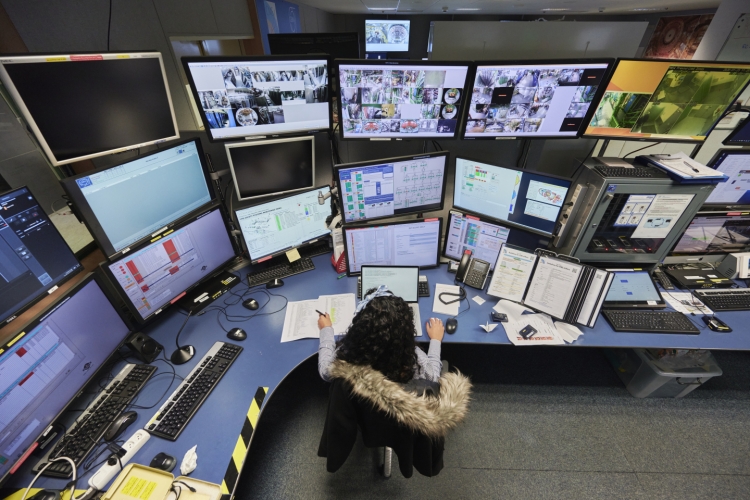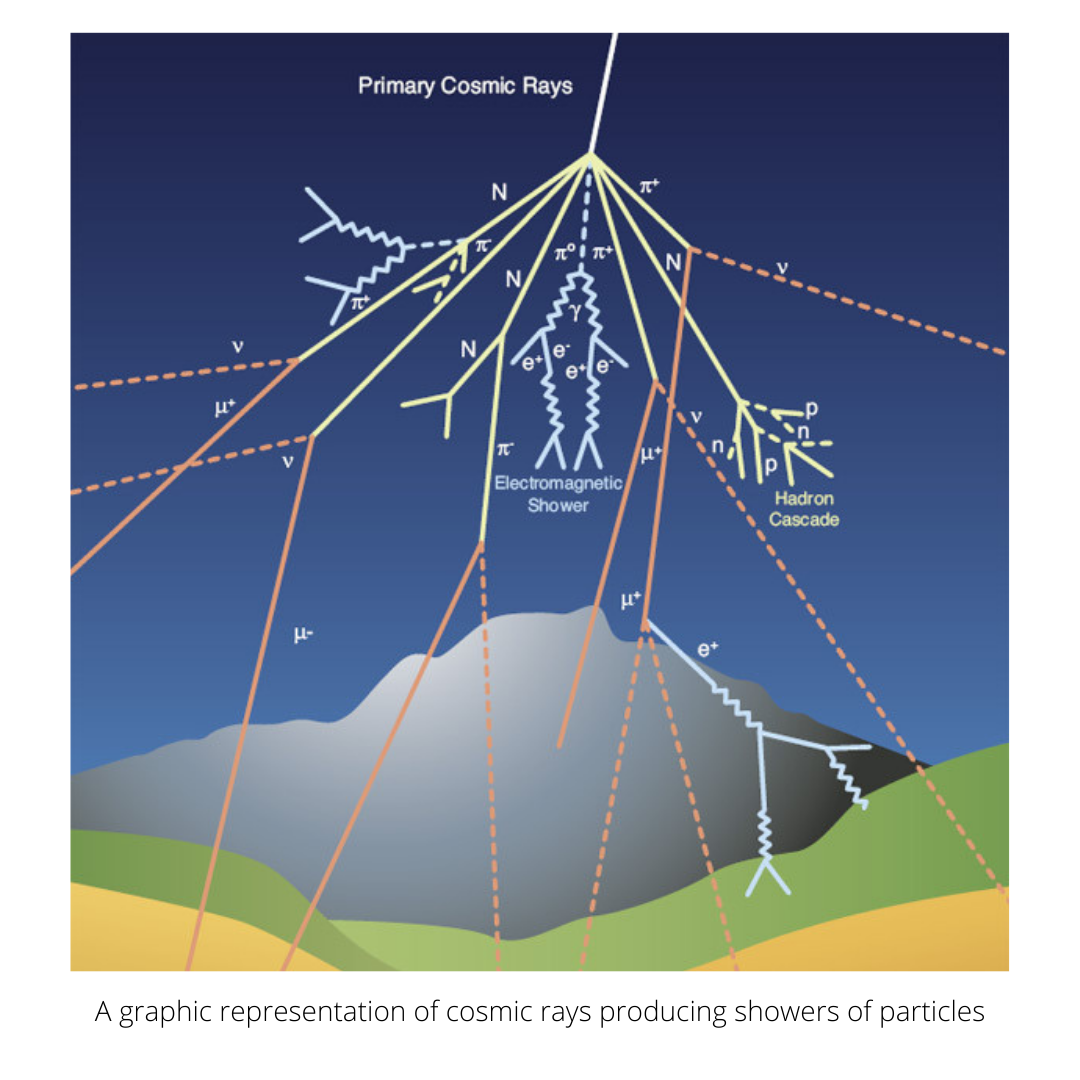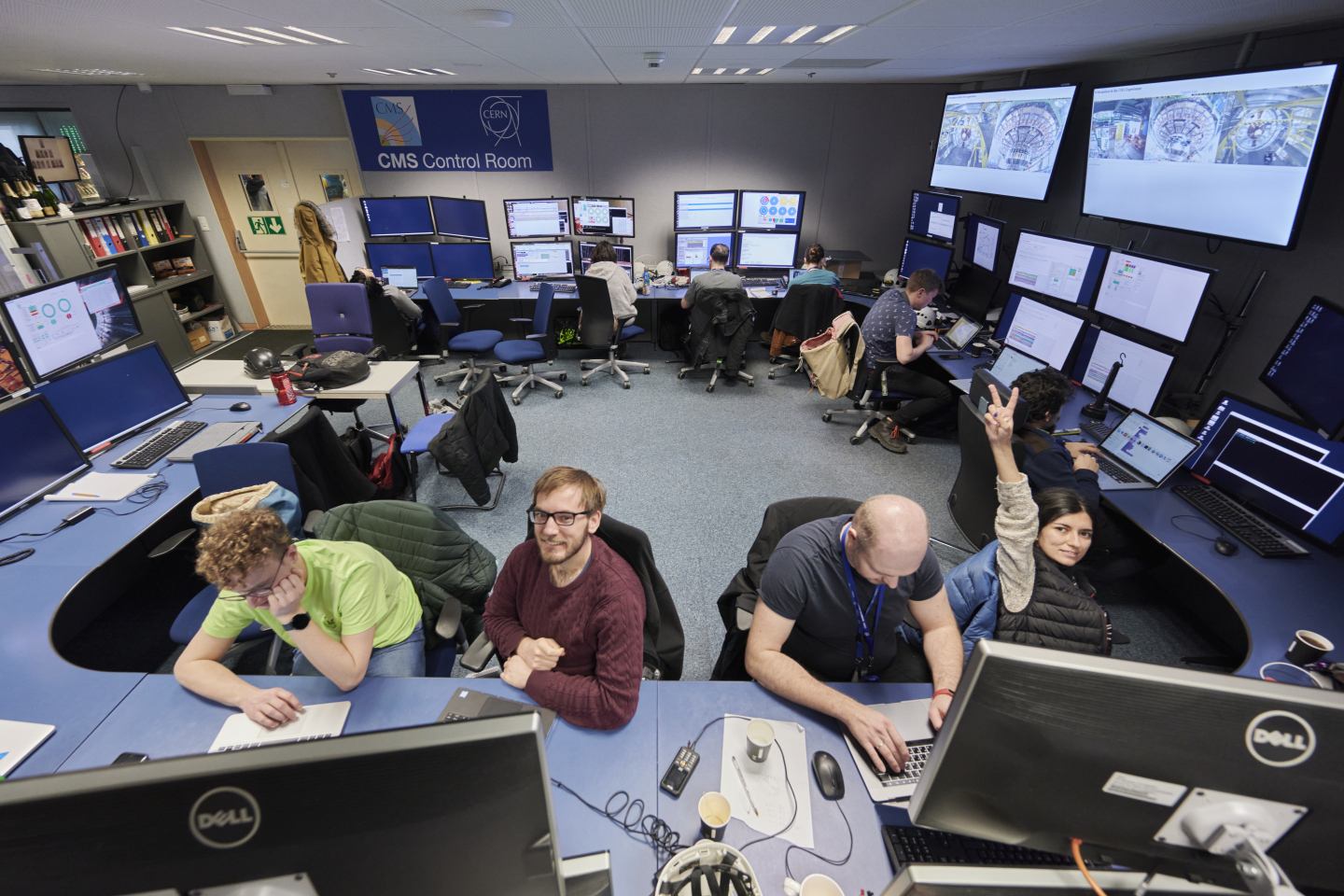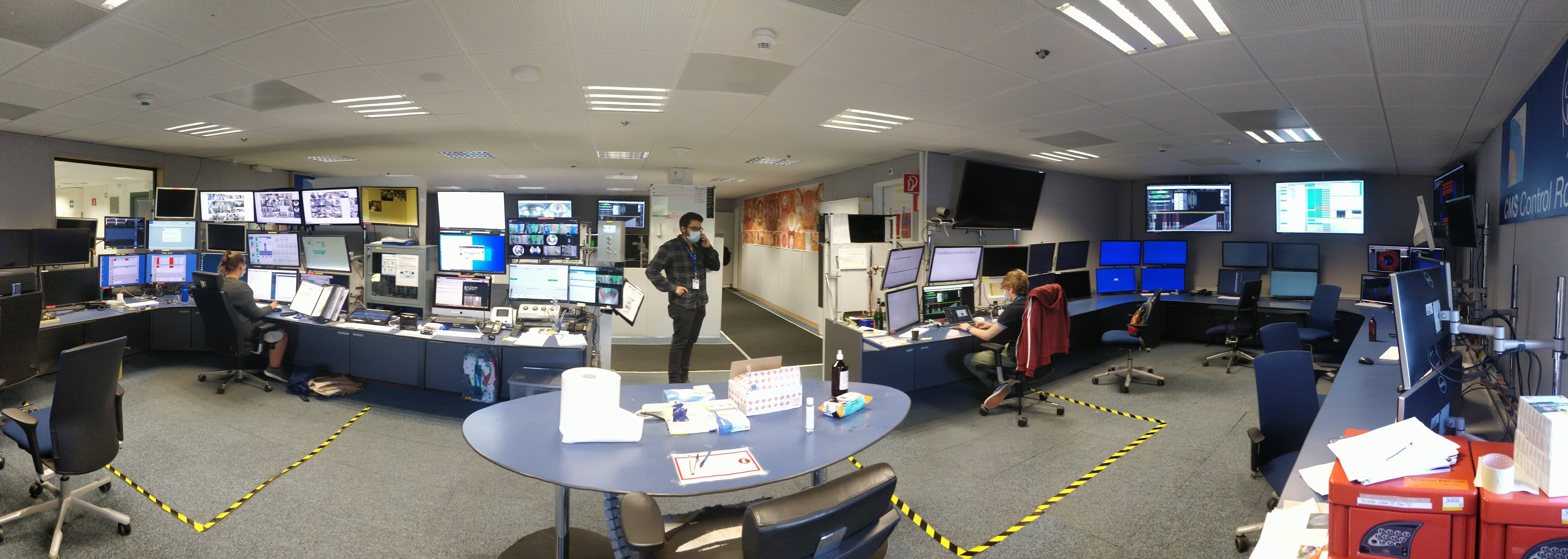
The focus of Run Coordination during Long Shutdown 2 (LS2) is to organize regular detector-commissioning periods which help to closely monitor the advance of maintenance and upgrade activities, to smooth interactions between subsystems. This ensures that all subsystems are ready in time to resume operations in 2022 with a fully calibrated and understood detector.
 During 2021, four cosmic ray data-taking campaigns organized over 3 days (MidWeek Global Runs : MWGRs) made it possible to validate the new detector installations and verify the correct functioning of the detectors already in place. High-energy cosmic rays are mainly protons that originate from outside our solar system. When they reach the Earth, cosmic rays interact with the upper atmosphere to produce a “shower” of particles, including muons. Some of these particles can be detected by the CMS experiment even 100 meters underground, allowing physicists to use those tracks to perform calibrations and subsystems checks.
During 2021, four cosmic ray data-taking campaigns organized over 3 days (MidWeek Global Runs : MWGRs) made it possible to validate the new detector installations and verify the correct functioning of the detectors already in place. High-energy cosmic rays are mainly protons that originate from outside our solar system. When they reach the Earth, cosmic rays interact with the upper atmosphere to produce a “shower” of particles, including muons. Some of these particles can be detected by the CMS experiment even 100 meters underground, allowing physicists to use those tracks to perform calibrations and subsystems checks.
Normally during MWGRs the CMS control room is full of experts for each sub-detector to guarantee optimum flow of operations. This year was however very special: we had to learn how to operate CMS in unprecedented conditions. With the pandemic, the number of operators (shifters) present had to be reduced in order to limit the population density at the Point 5 control room. At the same time, the presence at CERN of many experts and operators was also limited due to international travel restrictions.

CMS Control Room during data taking campaigns in 2019 before restrictions. Credit: CERN, Ordan, Julien
Despite this complicated situation, the incredible enthusiasm of the personnel present on the site made it possible to operate the detector in complete safety. CMS made a big effort to train on-site people, sometimes coming far from operations-related activities, to enable periods of 24/7 data taking. This enabled detector experts to rely on the presence of shifters, which have been essential for the safety of the CMS detector and the associated infrastructure. New methods of communication have been employed in order to allow experts who are abroad to transmit instructions, and even part of their expertise, to the locally resident CMS members.
Thanks to this unprecedented effort, we were able to organize a very important data collection for 5 weeks continuously during this summer. This intense period included a number of significant achievements. These include updating the Detector Control System (DCS), using GPUs for the High Level Trigger System (HLT), and calibrating refurbished muon chambers as well as the new GEM detectors. The calorimeters also took advantage of many hours of data to perfect their algorithms. Finally, the 3.5 million muon tracks reconstructed in the central detector made it possible to derive an alignment of the pixel detector freshly installed at the heart of CMS.

CMS Control Room during data taking campaign, August 2021. Credit: Andrea Massironi
Looking forward lies an even richer program. The first step will be to commission the CMS magnet and exercise the full detector at 3.8 Tesla with cosmic data during the month of October 2021. We aim to be fully ready for the first LHC test beams at the end of October with the goal of recording collisions at 900 GeV (Giga-Electron Volt). Beyond the impatience to "see again" collisions after almost 3 years of shutdown, this exercise will also be an opportunity to time in our detectors, and to measure the alignment of the pixel detector with respect to the beam line. These measures will be extremely valuable in ensuring an efficient start-up of data taking when run 3 starts next spring.

